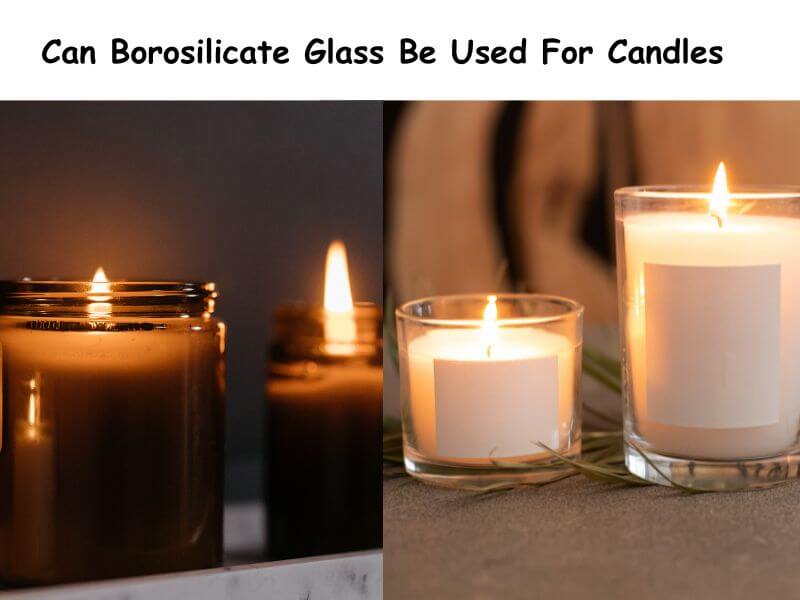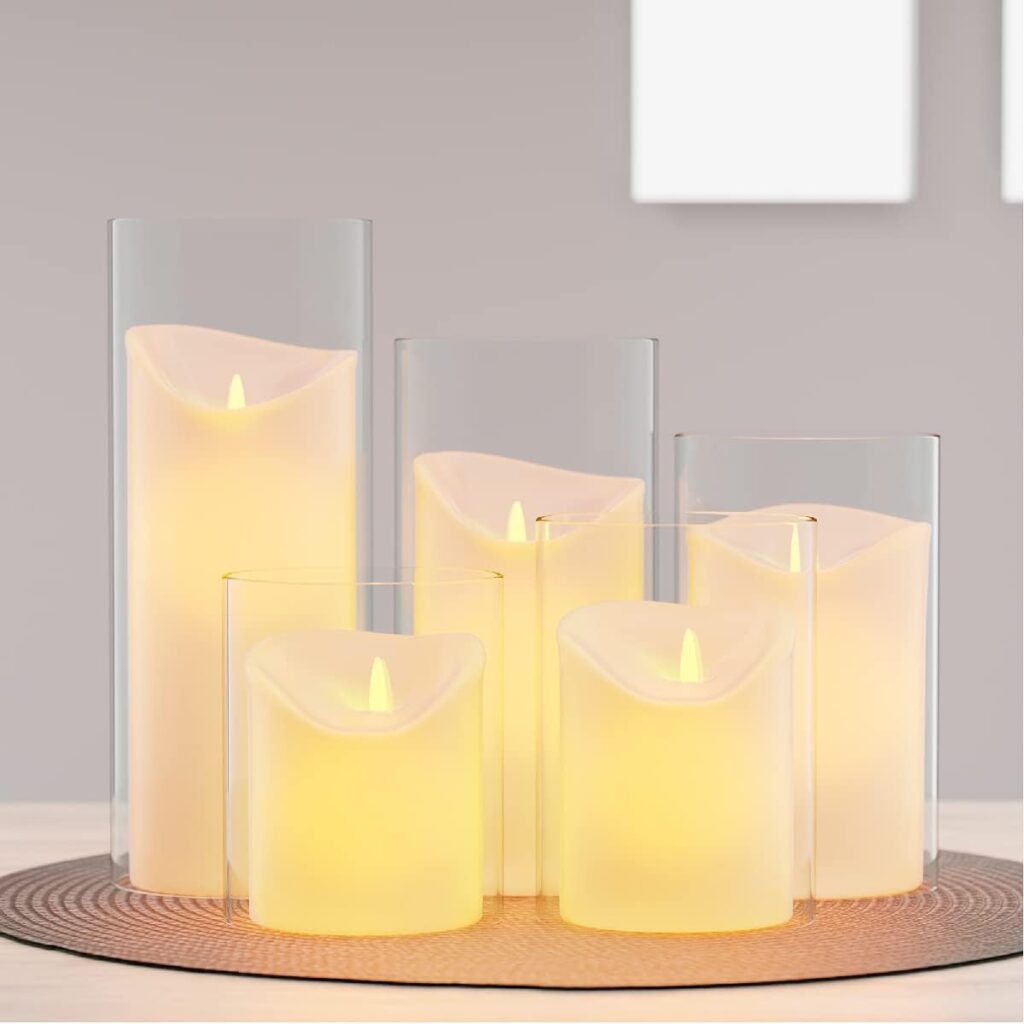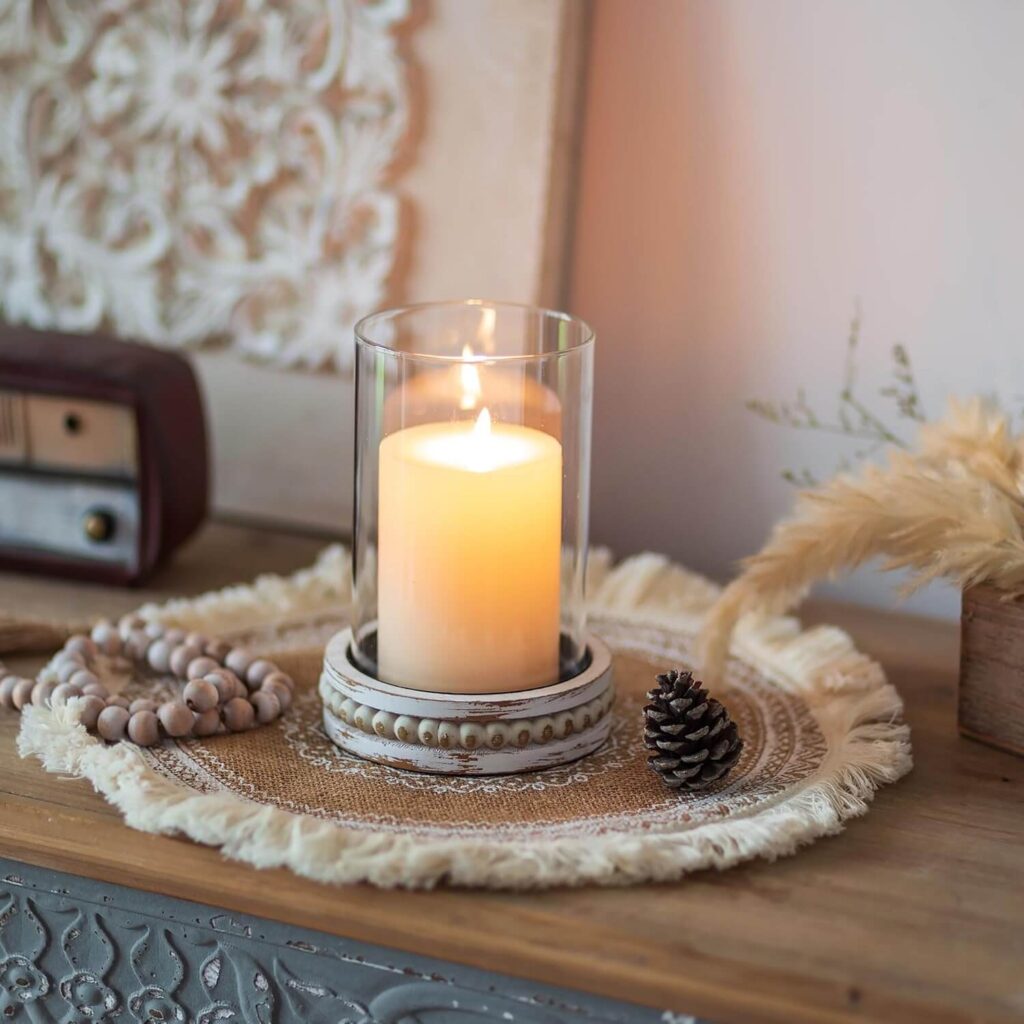You’re setting up for a cosy evening at home. The lights are dimmed, your favourite playlist is on, and you’re about to light some candles to complete the ambiance.
But wait, what container should you use for those candles?
If you’ve been exploring different glassware options, you might have encountered borosilicate glass.
Borosilicate glass has become increasingly popular in kitchenware and laboratory equipment because of its impressive heat resistance.
But can borosilicate glass be used for candles? Is it safe? Will it crack under the heat?
These questions might be swirling in your mind as you consider the perfect vessel for your candle-making or displaying adventures.
Let’s shed some light on this burning question.
KEY PROPERTIES OF BOROSILICATE GLASS
See below the various properties of Borosilicate glass:
- Superior thermal resistance: Can withstand temperatures up to 400°C (752°F)
- Low coefficient of thermal expansion: Expands very little when heated
- Chemical resistance: Doesn’t react with most substances
- Clarity: Provides excellent transparency
- Durability: More resistant to scratches and breakage than regular glass
These properties make borosilicate glass an excellent material for various applications ( making it different from ordinary glass) where heat resistance is crucial, from laboratory equipment to kitchen cookware.
But does that make it suitable for candles? Let’s find out.
CAN BOROSILICATE GLASS BE USED FOR CANDLES?

Yes, borosilicate glass can be used for candles, and it’s one of the safest options available. Its high heat resistance and low thermal expansion coefficient make it ideal for withstanding the heat generated by burning candles without cracking or breaking.
When a candle burns, it can generate temperatures between 800-1400°C (1472-2552°F) at the flame itself.

However, the temperature of the container holding the wax typically reaches only about 80-120°C (176-248°F). Borosilicate glass can comfortably handle these temperatures without any risk of shattering.
Why Borosilicate Glass is Perfect for Candles:

- Safety: Its heat resistance means it won’t shatter unexpectedly due to thermal shock.
- Longevity: It’s more durable than regular glass, so your candle containers will last longer.
- Aesthetics: The crystal-clear appearance allows you to showcase colourful candles beautifully.
- Versatility: Can be used for both container candles and tealight holders.
- Reusability: Once your candle is finished, the container can be easily cleaned and reused.

Let’s look at some specific candle applications for borosilicate glass:
| Candle Type | Suitability of Borosilicate Glass | Why It Works |
| Container Candles | Excellent | Provides a safe base that won’t crack with heat |
| Tealights | Very Good | Offers clear visibility of the flame, handles heat well |
| Pillar Candle Holders | Good | Provides safe base that won’t crack with heat |
| Floating Candles | Excellent | Clear visibility and water resistance |
| Aromatherapy Candles | Excellent | Doesn’t interact with essential oils in the wax |
HOW TO USE BOROSILICATE GLASS FOR CANDLE MAKING
If you’re interested in making your candles using borosilicate glass containers, here are some tips to ensure success:
Selecting the Right Container

- Choose appropriate shapes: Vessels with straight sides are ideal for even burning.
- Check for thickness: Thicker borosilicate glass (at least 2-3mm) is preferable for candle making.
- Consider the size: Ensure the container is large enough to maintain a safe distance between the flame and the glass walls.
- Look for quality: Inspect for any flaws or imperfections in the glass before using.
Candle Making Process with Borosilicate Glass
- Preparation: Clean the borosilicate container thoroughly and ensure it’s completely dry.
- Pre-heating (optional): Some candle makers prefer to slightly warm the glass before pouring hot wax to prevent air bubbles from forming against the sides.
- Wick placement: Secure the wick to the bottom of the container using a wick sticker or a drop of melted wax.
- Wax pouring: Pour the melted wax into the container at the recommended temperature (typically around 70-80°C for soy wax).
- Cooling: Allow the candle to cool slowly at room temperature to prevent cracking or sinking of the wax.
While some might wonder if borosilicate glass and crystal are the same, they are not. Crystal typically contains lead or other minerals that make it sparkle, while borosilicate glass is lead-free and valued primarily for its heat resistance rather than decorative properties.
Safety Considerations
Even though borosilicate glass is highly heat-resistant, it’s still important to follow proper candle safety guidelines:
- Never leave burning candles unattended.
- Keep candles away from drafts, flammable materials, and children or pets.
- Always place candles on a heat-resistant surface.
- Trim wicks to 6mm (1/4 inch) before lighting to prevent excessive flames.
- Stop using the candle when only about 1cm (1/2 inch) of wax remains at the bottom.
- Allow the borosilicate container to cool completely before handling or cleaning..
ENVIRONMENTAL IMPACT
For environmentally conscious consumers, it’s worth noting that the borosilicate glass’s biodegradable status is similar to other types of glass.
While glass is not biodegradable in the traditional sense (it doesn’t break down into simpler substances through natural processes), it is 100% recyclable indefinitely without loss of quality.
Borosilicate glass containers for candles represent a more sustainable choice compared to plastic alternatives because:
- They can be reused multiple times
- They’re recyclable (though you should check local recycling guidelines, as some facilities may process borosilicate glass differently)
- They don’t release harmful chemicals when exposed to heat
- They have a longer lifespan, reducing the need for frequent replacements.
DIY IDEAS: CREATIVE WAYS TO USE BOROSILICATE GLASS FOR CANDLES

Looking for inspiration? Here are some creative ways to use borosilicate glass vessels for your candle projects:
Multi-wick creations: Larger borosilicate vessels can accommodate multiple wicks for more light and faster scent distribution.
Terrarium candles: Create a miniature landscape with layers of coloured wax in a borosilicate container.
Suspended elements: Add dried flowers, herbs, or small decorative items to the sides of the container before pouring wax.
Gradient candles: Layer different coloured waxes to create an ombre effect that shines beautifully through clear borosilicate glass.
Etched designs: Use glass etching cream to create patterns on the outside of borosilicate containers before making candles.
WHERE TO FIND BOROSILICATE GLASS FOR CANDLE MAKING
Borosilicate glass containers suitable for candles can be found from various sources:
- Laboratory supply companies: Offer beakers and other vessels that can be repurposed
- Kitchen supply stores: Look for borosilicate measuring cups, food storage containers, or teapots
- Online marketplaces: Platforms like Etsy, Amazon, or eBay offer a wide variety of options
- Recycled laboratory equipment: Some companies repurpose lab-grade borosilicate glass into household items
When purchasing, always verify that what you’re buying is genuine borosilicate glass, as some sellers may mislabel regular glass products.
TROUBLESHOOTING COMMON ISSUES
Even with borosilicate glass, you might encounter some challenges when making or using candles:
Tunneling
If your candle burns straight down the middle instead of across the entire surface, try these solutions:
- Ensure the first burn is long enough to melt the entire top surface (typically 1 hour per inch of container diameter)
- Use the appropriate wick size for your container diameter
- Consider adding a wax with a lower melting point to your blend
Wet Spots
If you notice areas where the wax pulls away from the glass:
- Try preheating your borosilicate container slightly before pouring
- Pour the wax at a slightly higher temperature
- Consider adding a small amount of Vybar or stearic acid to your wax blend
Cracking Sounds
If you hear slight cracking noises:
- This is normal with any glass as it expands slightly with heat
- As long as you’re using genuine borosilicate glass, this should not lead to breakage
- To minimize this, avoid placing the candle in drafty areas or on cold surfaces.
CONCLUSION
Borosilicate glass is indeed an excellent choice for candles, offering superior heat resistance, beautiful clarity, and durability that make it perfect for both homemade and commercial candle vessels.
Its ability to withstand temperature fluctuations without cracking makes it one of the safest options available, giving you peace of mind while enjoying the warm glow of your favourite candles.
Whether you’re a professional candle maker or a hobbyist looking to create something special, borosilicate glass provides a versatile, reusable, and environmentally friendly option that enhances both the appearance and safety of your candles.
So go ahead, light up those borosilicate-encased candles and enjoy the ambiance without worry!
- The Ultimate Guide to Pfaltzgraff Onion Soup Bowls - June 13, 2025
- Is Pfaltzgraff Silverware Good Quality? - June 10, 2025
- Are Pfaltzgraff Dishes Oven Safe? The Complete Guide Every Collector Needs - June 9, 2025
2 thoughts on “Can Borosilicate Glass Be Used For Candles”